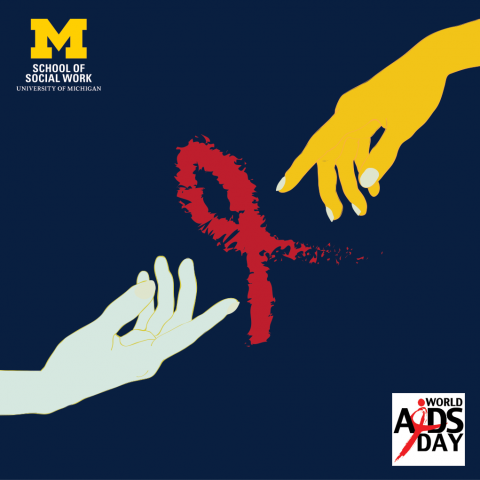World AIDS Day 2020 — “Ending the HIV/AIDS Epidemic: Resilience and Impact”
December 1, 2020
It is with humility that I invite you to commemorate World AIDS Day 2020, “Ending the HIV/AIDS Epidemic: Resilience and Impact.” Each year on December 1, organizations and individuals across the world bring attention to the HIV epidemic, endeavor to increase HIV awareness and knowledge, speak out against HIV stigma and call for an increased response to move toward ending the HIV/AIDS epidemic.
What is World AIDS Day and Why Does It Still Matter?
World AIDS Day began in 1988, immediately inspiring people around the world to unite in order to fight the spread of the Human Immunodeficiency Virus (HIV) and to promote awareness about the plight of those who with Acquired Immunodeficiency Syndrome (AIDS). Today, World AIDS Day continues to give us opportunities to demonstrate love and support for people living with HIV, and to commemorate those who have died from AIDS-related complications.
HIV is transmitted through direct contact with infected blood, semen and/or vaginal fluids. Within a few weeks of infection, those infected may experience flu-like symptoms – fever, sore throat, and fatigue. HIV infection is typically asymptomatic until it progresses to AIDS – weight loss, fever or night sweats, fatigue and recurrent infections. For more information on transmission and symptoms, please go to Centers For Disease Control and Preventions HIV/AIDS Facts and Brochures. There is no cure or vaccine for HIV/AIDS. However, adherence to antiretroviral therapies (ART) can considerably slow the progress of the disease and prolong the individual’s life.
Two Pandemics Interconnect: HIV and COVID-19
Globally, an estimated 38 million people live with HIV and more than 35 million have died of AIDS complications in the past thirty years. As of December 1, 2020, there are approximately 63 million cases of COVID-19 and there have been nearly 1.5 million deaths worldwide. The geographic spread and the toll taken on vulnerable populations make HIV and COVID-19 two of the most devastating pandemics in history.
In the United States, HIV/AIDS disproportionately impacts Black communities. Black people account for about 13% of the U.S. population, but they represented 42% of new HIV diagnoses in 2018. COVID-19 also disproportionately affects Blacks people in the U.S. and abroad. Understanding the connection between these two pandemics is essential, as both clearly show us the need to remove structural barriers affecting the widespread transmission of disease across underserved communities.
These pandemics highlight the effects of anti-Blackness, racism, homophobia and transphobia, poverty and other forms of abuse and oppression that lead to a lack of access to prevention and care. Long-standing inequities have put oppressed groups at increased risk of COVID-19 infection and death. Those living with chronic conditions, such as HIV, are more vulnerable to COVID-19, due to recent disruptions in access to HIV treatments and preventive medications.
World AIDS Day reminds us that HIV is still with us. There is still a vital need to increase awareness, to fight HIV stigma and prejudice against vulnerable populations, and to improve the plight of those who are living with HIV/AIDS while confronting COVID-19.
What Can I do on World AIDS Day?
On World AIDS Day we can all show solidarity with the millions living with HIV. You may choose to wear a red HIV-awareness ribbon today or on any other day of the year. You may also ask yourself, “What can I do, with my capabilities, to help end the HIV/AIDS epidemic and to support those already suffering or at risk?”
Rogério Meireles Pinto
Associate Dean for Research and Professor of Social Work
